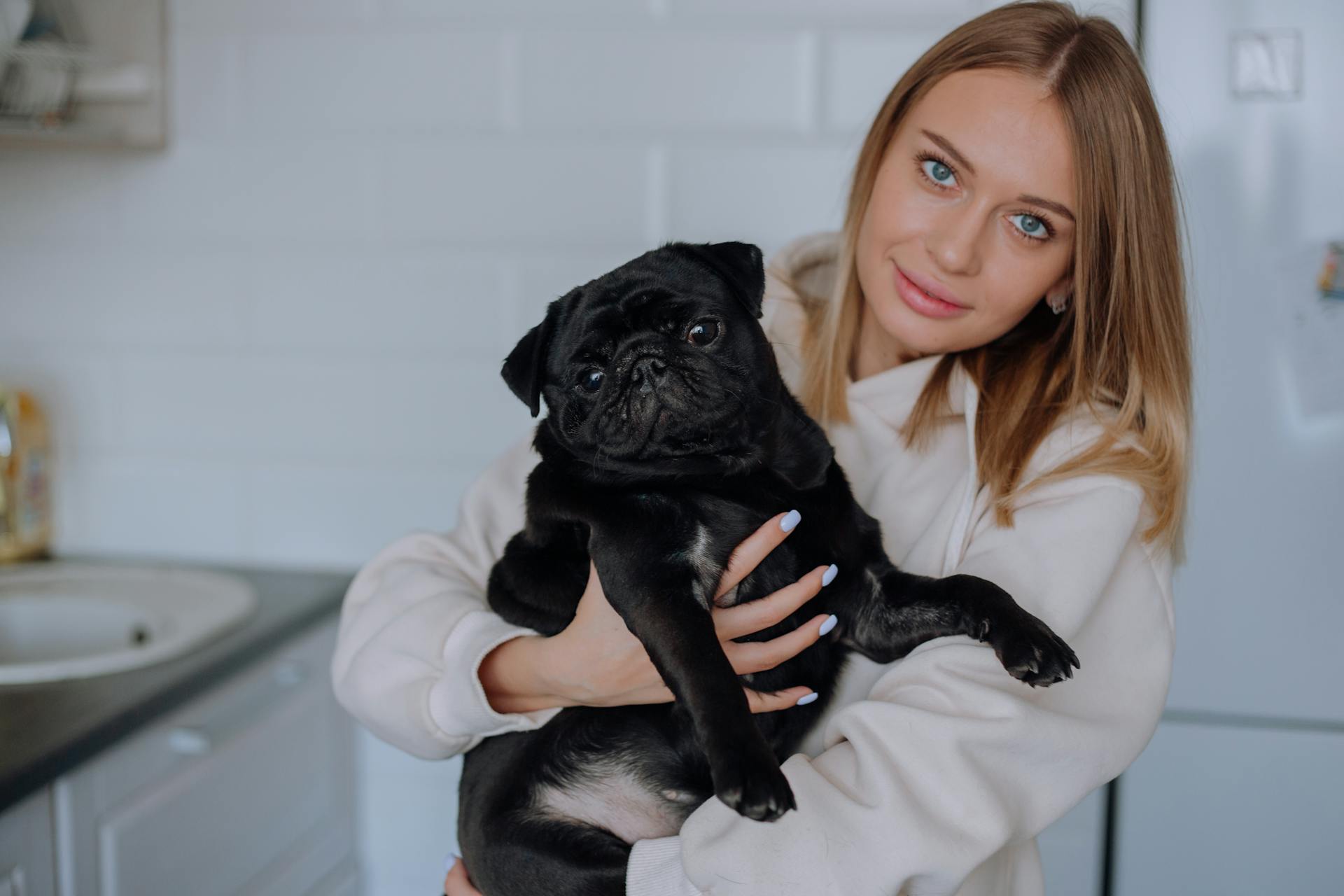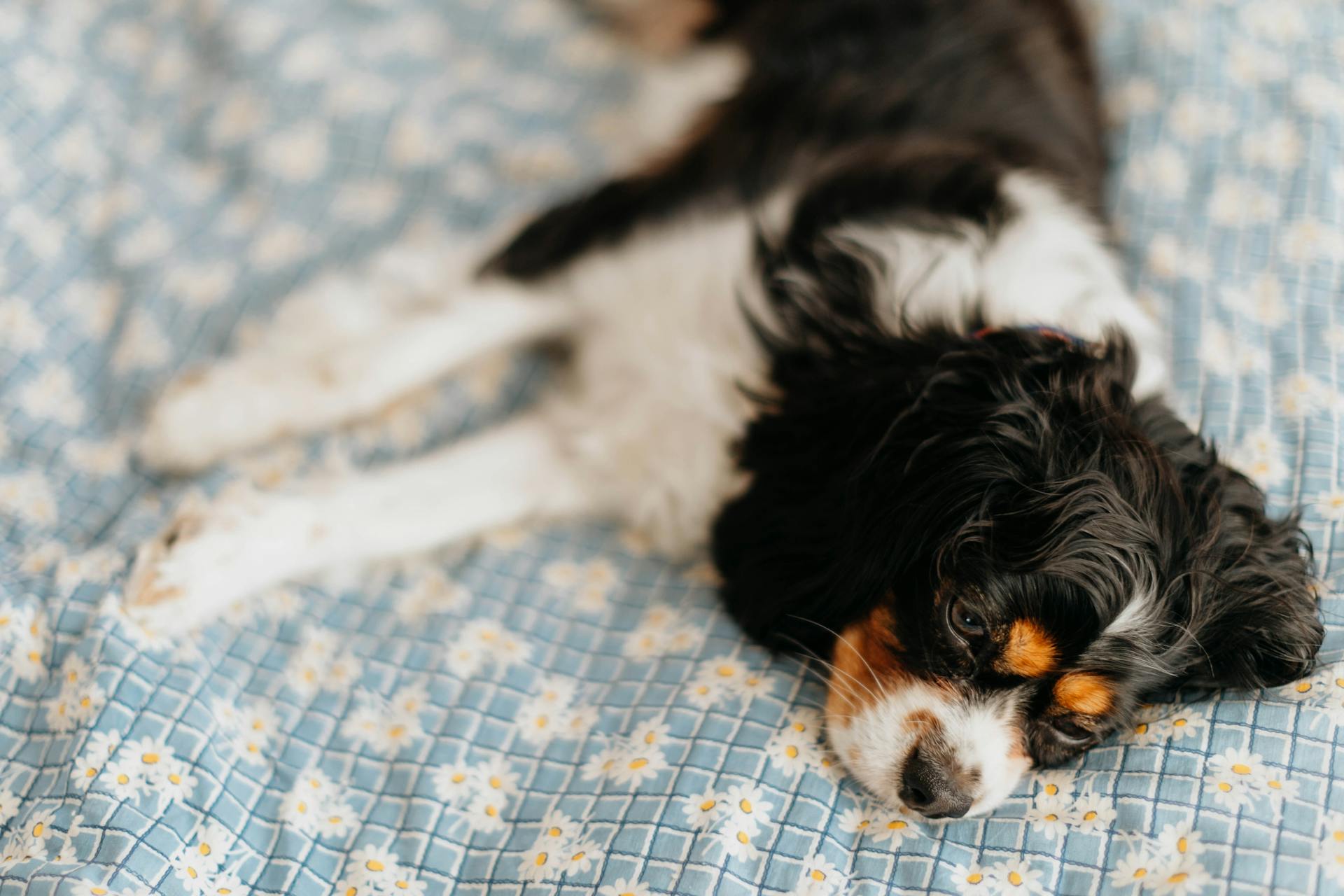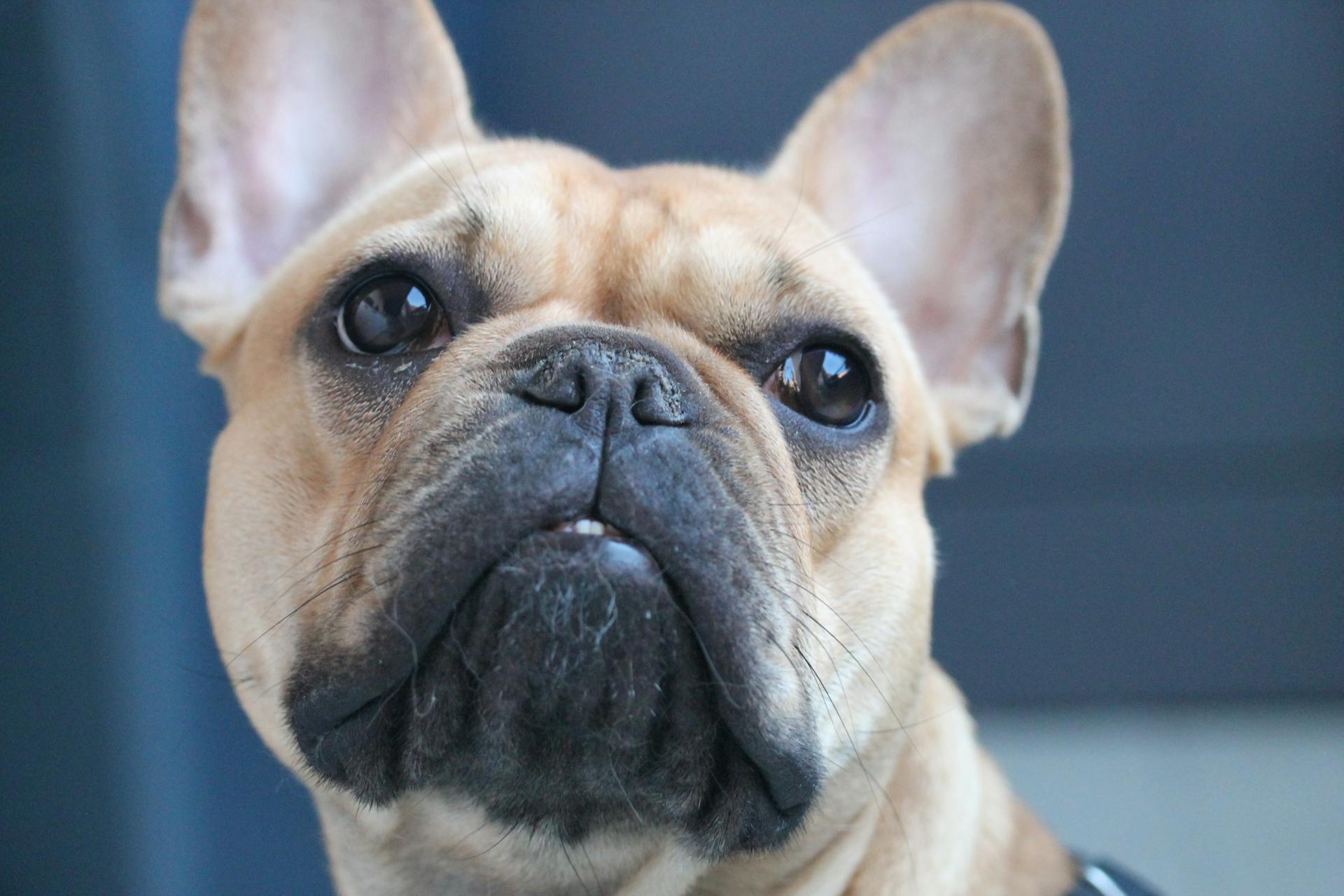
Pugs are known for their playful, loyal, and affectionate nature. They make great companions for families and singles alike.
One of the biggest advantages of owning a pug is their relatively small size, which makes them perfect for living in apartments or homes with small yards.
Pugs are also relatively low-maintenance when it comes to exercise, requiring only short daily walks to stay happy and healthy.
Their short coats require minimal grooming, making them a great choice for busy owners or those who aren't fond of frequent grooming sessions.
Caring for a Pug
Pugs are a very friendly dog breed that thrive on attention from their pet parents.
They are people pleasers and like to feel included in the day-to-day happenings in their home. Pugs are best suited for homes where they can be the center of attention.
Pugs are a brachycephalic breed, which means they have a short muzzle, flat face, narrow nostrils, and narrow airways. This can lead to breathing difficulties and loud snoring.
As a result, Pugs do not do well in overly hot climates or with extreme exercise. They need to be kept indoors with controlled excursions outside.
Pugs are gassier than most dogs due to their brachycephalic skull shape. This is a common trait in Pugs and can be cute, but it also means they breathe with more effort than dogs with a normal-size muzzle.
Pugs require regular veterinary visits to monitor their health and address any potential issues. Their flat face creates a lot of predispositions for eye, ear, and skin issues, as well as breathing and dental problems.
Pugs need daily exercise and playtime, but high-energy activities are not suitable for them. They require consistent training and socialization to make sure they are well-mannered.
Pugs have a low-maintenance coat, but they still need regular grooming upkeep. Brushing their teeth every day with a dog-safe toothpaste and brush is essential to prevent dental disease.
Health Issues
Pugs are prone to a range of health issues due to their brachycephalic build. Their flat faces make breathing difficult and can lead to overheating.
Some common health problems in pugs include eye issues, such as dry eye and corneal ulcers, as well as skin allergies and ear infections. Regular cleaning of the skin folds around their face and ears can help prevent these issues.
Pugs are also susceptible to dental problems, which can be prevented with daily brushing and regular professional cleanings. Brushing your pug's teeth with a dog-safe toothpaste is a simple and effective way to keep their teeth healthy.
Some specific health issues that can affect pugs include:
- Brachycephalic syndrome (breathing problems and overheating)
- Eye problems, such as dry eye and corneal ulcers
- Allergies and other skin issues
- Dental issues
Health Issues
Pugs are prone to a range of health issues due to their brachycephalic build, which means they can have breathing difficulties and overheating problems. This is especially true if they're exposed to high temperatures or humidity.
Their eyes are also very vulnerable to damage because of their face shape and shallow orbits. This can lead to eye problems like dry eye and corneal ulcers.
A fresh viewpoint: Pug Dog Eye Problems
Pugs are sensitive to skin, ear, and eye diseases, and breathing difficulties. Regular bathing, ear cleaning, and frequent vet visits can help prevent some of these issues.
Some common health problems in Pugs include brachycephalic syndrome, eye problems, allergies, encephalitis, hip dysplasia, and patellar luxation. These can be managed with the help of a veterinarian.
Here are some specific health issues to watch out for in Pugs:
- Brachycephalic syndrome (breathing problems and overheating)
- Eye problems (dry eye, corneal ulcers)
- Allergies and skin issues
- Encephalitis
- Hip dysplasia
- Patellar luxation
Regular cleaning of the skin folds around a Pug's face and ears can help prevent skin allergies and ear infections. This should be done daily, but be sure to ask your vet for guidance on how often to clean your Pug's ears.
Dental care is also important for Pugs, as they can be prone to dental disease. Brushing your Pug's teeth every day with a dog-safe toothpaste and brush, and getting professional dental cleanings as recommended by your vet, can help prevent these issues.
For another approach, see: Pug Dog Skin Problems
Prone to Weight Gain
Pugs are notorious foodies and love to sleep, which can lead to weight gain if they eat as much as they want or don't get enough exercise. Their constant begging for treats doesn't help either.
Pugs tend to be underfoot, constantly seeking attention and snacks, which can cause weight gain. This behavior is a common sight in many Pug households.
Working closely with your vet is crucial to establishing your Pug's dietary needs and preventing obesity and joint issues. Regular check-ups and monitoring of your Pug's weight can help you make necessary adjustments to their diet and exercise routine.
See what others are reading: Pug Dog Growth Chart
Diet and Nutrition
Pugs are prone to obesity, so it's essential to monitor their food intake and ensure they're not overeating.
Feed your pug a high-quality, nutritionally balanced dog food, and consider discussing a weight management or calorie-restricted diet with your vet to prevent obesity.
Fresh, clean water should always be available for your pug, and you should discuss the amount and type of food with your vet, as nutritional needs can change with age, activity level, and more.
Pugs do best when fed two or three small meals a day, and their shape of mouth limits how well they can pick up and chew food, so choose a dog food with the right kibble size to prevent choking.
You might enjoy: Is Canidae Dog Food Good for Dogs
Diet and Nutrition
Feed your pug a high-quality, nutritionally balanced dog food. It’s common to feed two measured meals per day, but you should always discuss both the amount and the type of food with your vet.
Pugs are prone to obesity, so it’s essential to watch treats and other extra food intake to ensure your dog is not overeating. Always have fresh, clean water available.
Obesity increases the risk of heatstroke and breathing problems in pugs. To help keep your pug at a healthy weight, talk with your veterinarian about a weight management or calorie-restricted diet.
Pugs do best when fed two or three small meals a day. This can help prevent overeating and keep them at a healthy weight.
The shape of a pug’s mouth limits how well they can pick up and chew food. Look for dog food that’s designed to be easier to eat and help manage pug-specific medical problems.
Recommended read: How to Stop Dog from Eating Other Dogs Food
Low Grooming Needs

Pugs have relatively low grooming needs, which is a great perk for many owners.
Their short coats require little brushing, and they only need a weekly brushing for most of the year.
In fact, their grooming needs are so minimal that you can easily fit it into your busy schedule.
However, during the shedding seasons in spring and fall, you may need to increase the brushing frequency for a few weeks.
Behavior and Training
Pugs are generally happy dogs, but they can become mischievous and develop problematic behaviors if they don't receive enough mental stimulation.
They need regular exercise, but high-energy activities like running or agility are not suitable for them. Several short walks of 15-20 minutes each are a good exercise routine for most Pugs.
Pugs are food-motivated, which makes them relatively easy to train, especially with positive reinforcement methods like treats.
They are prone to obesity, so it's essential to keep track of the treats you're feeding them and not overfeed them.
A different take: Veteran Dog Treats
Pugs are eager to please and respond well to positive training methods, especially when motivated by treats.
Begin training and socialization at a young age, as this will help your pup grow into a confident and well-adjusted dog.
Pugs are outgoing dogs, but they can be stubborn and sensitive, especially if they're not properly trained and socialized.
Positive reinforcement training methods like extra praise and treats are effective in training Pugs, and consistency is key to their success.
Training will also help your pet feel more secure when meeting new people and being in unfamiliar locations.
Pugs are intelligent and can learn a wide range of tricks with patience and consistency.
Readers also liked: What Brand of Dog Treats Are Killing Dogs
Characteristics of the
Pugs are known for their friendly and outgoing personalities. They are generally very affectionate and love to spend time with their human family members.
Pugs are adaptable to apartment living due to their relatively low barking tendency and moderate exercise needs. They require daily walks or playtime in the yard, but they don't need as much exercise as other breeds.
Their affectionate nature makes them perfect for families with children, but it's essential to supervise interactions between young kids and pugs to ensure everyone's safety. Pugs are also great companions for adults who want a loyal and loving pet.
Here are some key characteristics of pugs that make them suitable for many families:
Pugs are also relatively low-maintenance pets when it comes to exercise, but they do require regular grooming to prevent shedding and skin problems.
Exercise
Exercise is a crucial aspect of pug care, and the good news is that pugs don't require lengthy and intense exercise sessions. They're actually great for unsporty people or those with limited mobility.
Pugs need a moderate amount of exercise, roughly around an hour per day. A morning and evening walk plus some active playtime should be sufficient.
Pugs can participate in dog sports like agility and rally, which they enjoy doing with their humans. They also love puzzle toys and interactive toys to challenge them physically and mentally.
It's essential to take care not to overexert your pug, especially in warm weather. Pugs' short muzzle makes it hard for them to cool themselves through panting, which can lead to heat exhaustion and heat stroke.
Here are some fun exercise ideas for your pug:
- Leashed walks
- Active playtime
- Dog sports like agility and rally
- Puzzle toys and interactive toys
Frequently Asked Questions
What is the sad truth about pugs?
Pugs are prone to a serious respiratory condition called BOAS due to their flat face, which can lead to breathing difficulties and other health issues. This makes it essential to understand the special needs of pugs to ensure they receive proper care and attention.
Featured Images: pexels.com


